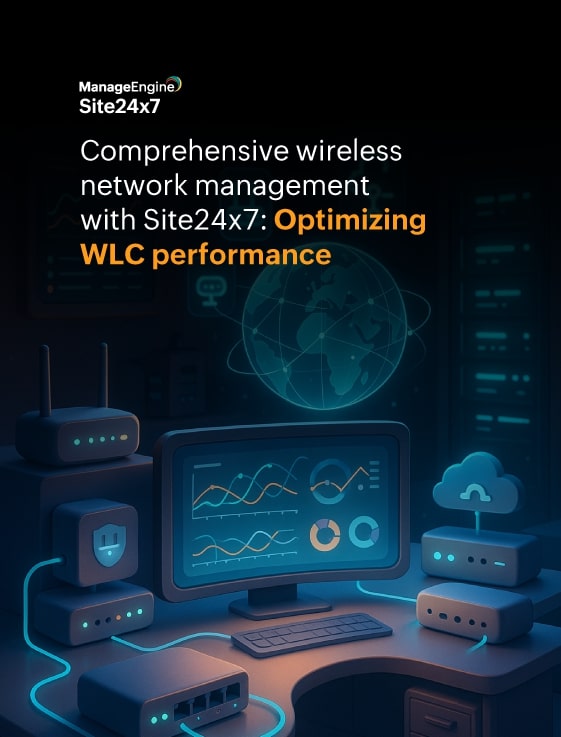A wireless LAN controller (WLC) is the brain behind a wireless network. It manages and configures multiple access points (APs) from one place. Instead of dealing with APs individually, the WLC lets you control them all centrally, making large wireless networks easier to scale, monitor, and secure.
Understanding the WLC
When APs are managed through a WLC, they become part of a single, coordinated system. This means fewer inconsistencies and faster deployment.
Think of the WLC as mission control for your Wi-Fi. It handles:
- AP configuration and firmware updates.
- SSID and VLAN assignments.
- Security enforcement and client authentication.
Where WLCs fit in wireless network management
For multi-floor buildings, campuses, or branch offices, a WLC simplifies everything from onboarding to troubleshooting. Without a WLC, configuring every AP manually is time-consuming and error-prone. With one, you get:
- One-click configuration across all APs.
- Centralized monitoring of performance, traffic, and devices.
- Easier upgrades and rollouts.
Why WLCs matter more than ever
Modern wireless networks carry more than email and web traffic; they support real-time apps, smart devices, and hybrid work. It’s the difference between a stable Wi-Fi experience and one full of dead zones and dropouts.
A WLC helps by:
- Balancing the client load across APs.
- Adapting to changing radio frequencies.
- Supporting fast, seamless roaming.
Visibility and performance at your fingertips
WLCs give you a full view of the wireless environment. This data helps you catch issues early—before they impact users.
You can track:
- AP statuses, channel utilization, and client counts.
- Bandwidth consumption per SSID or device.
- CPU and memory utilization.

Strengthening wireless security
A WLC ties into your firewall, network access control, and directory services, so security stays tight and consistent.
It also helps lock down your network by:
- Blocking rogue APs and suspicious clients.
- Enforcing 802.1X, WPA3, and RADIUS policies.
- Segmenting traffic with VLANs and role-based access.
What happens without a WLC?
Manual AP management doesn’t scale. From small businesses to enterprises, this becomes a bottleneck fast.
You’ll run into:
- Inconsistent settings and misconfigurations.
- Patchy visibility into network activity.
- Difficulty enforcing policies across locations.
- Longer downtime during outages or upgrades.
The critical role of WLCs in modern wireless networks
If you’re running more than a handful of APs, a WLC is essential. It centralizes management, boosts performance, and keeps your wireless networks secure, even as they grow.
